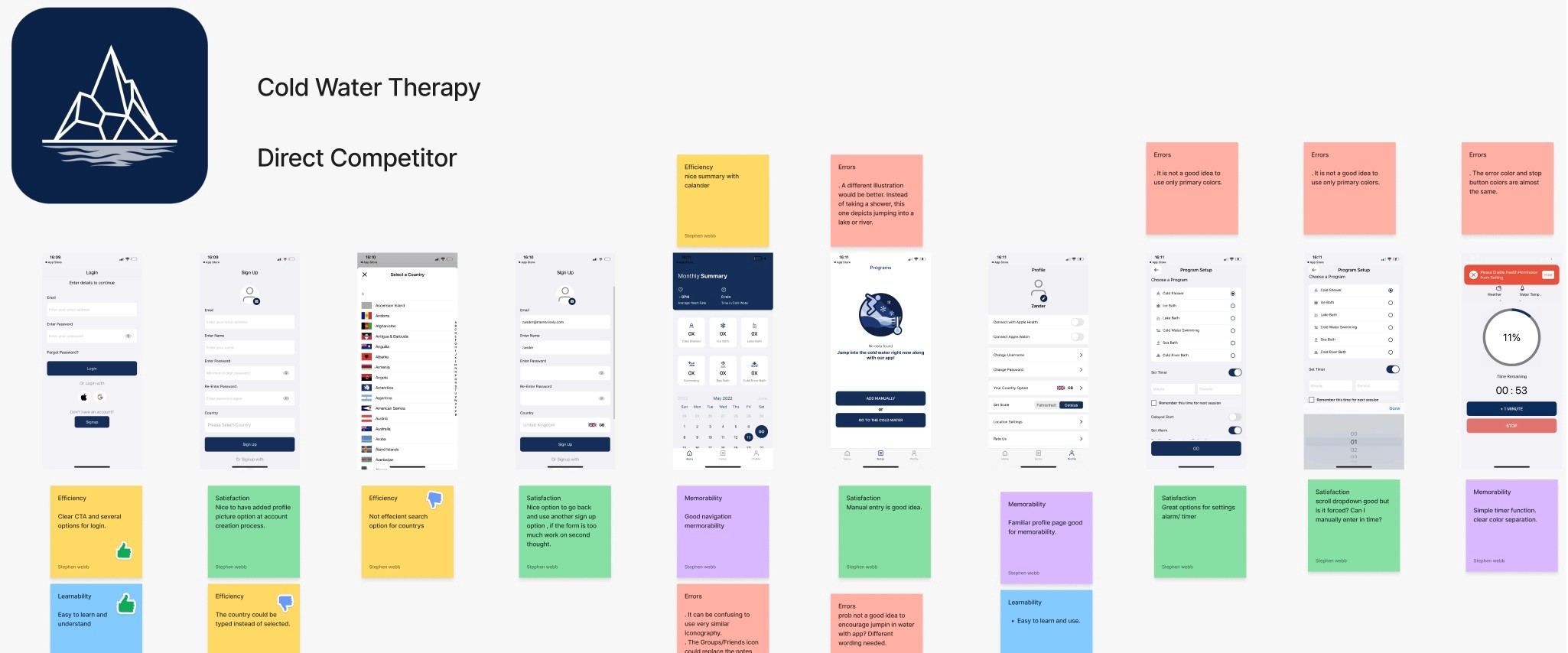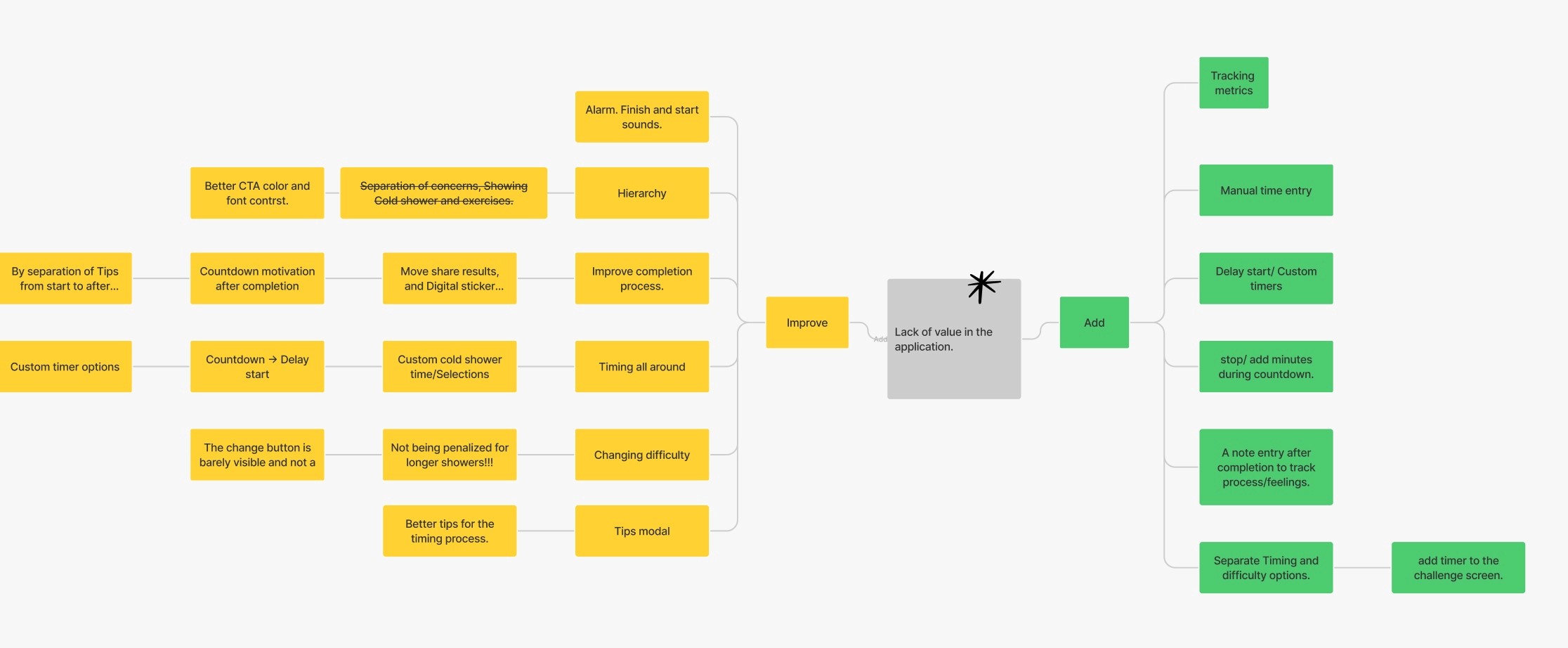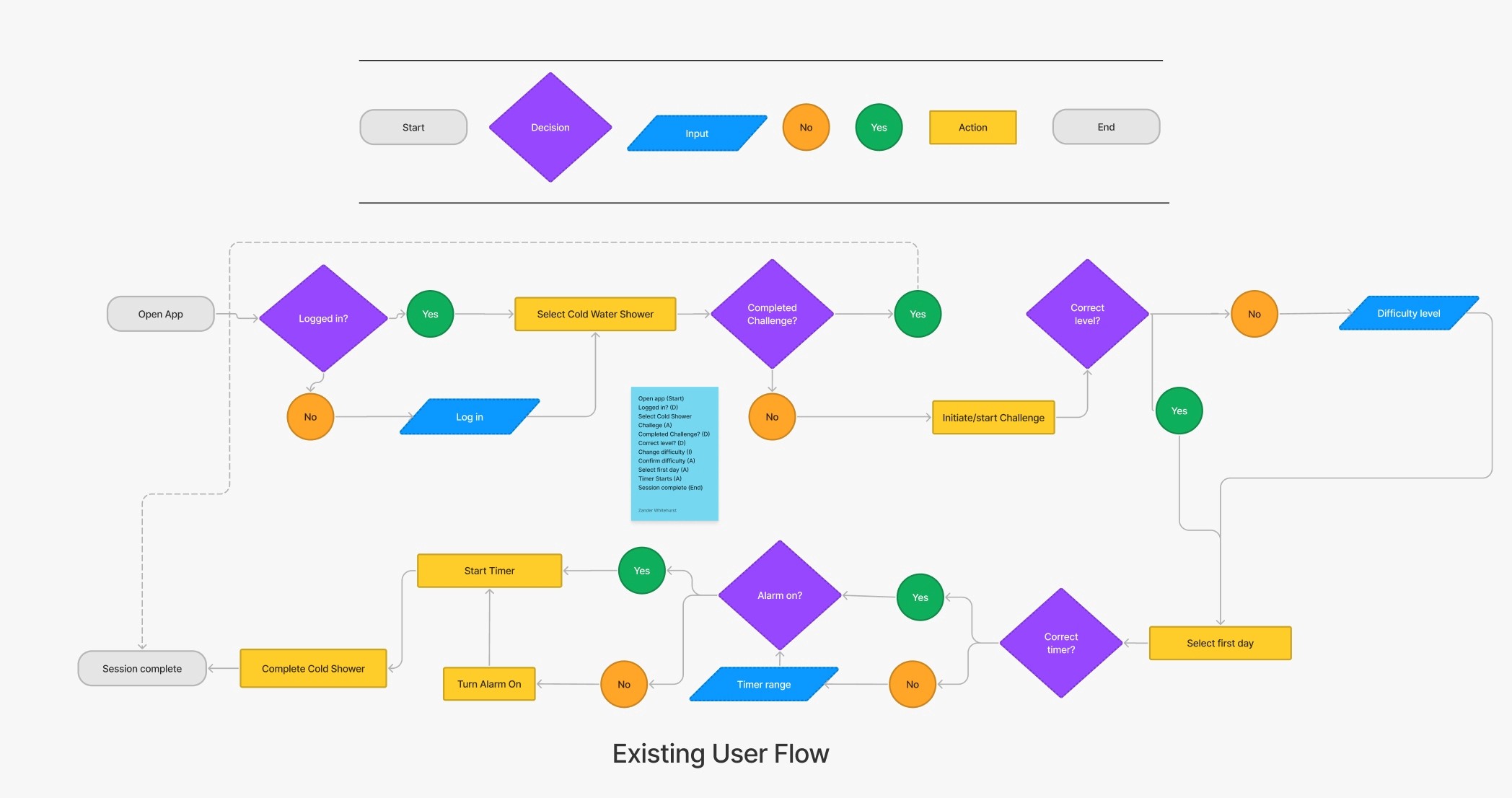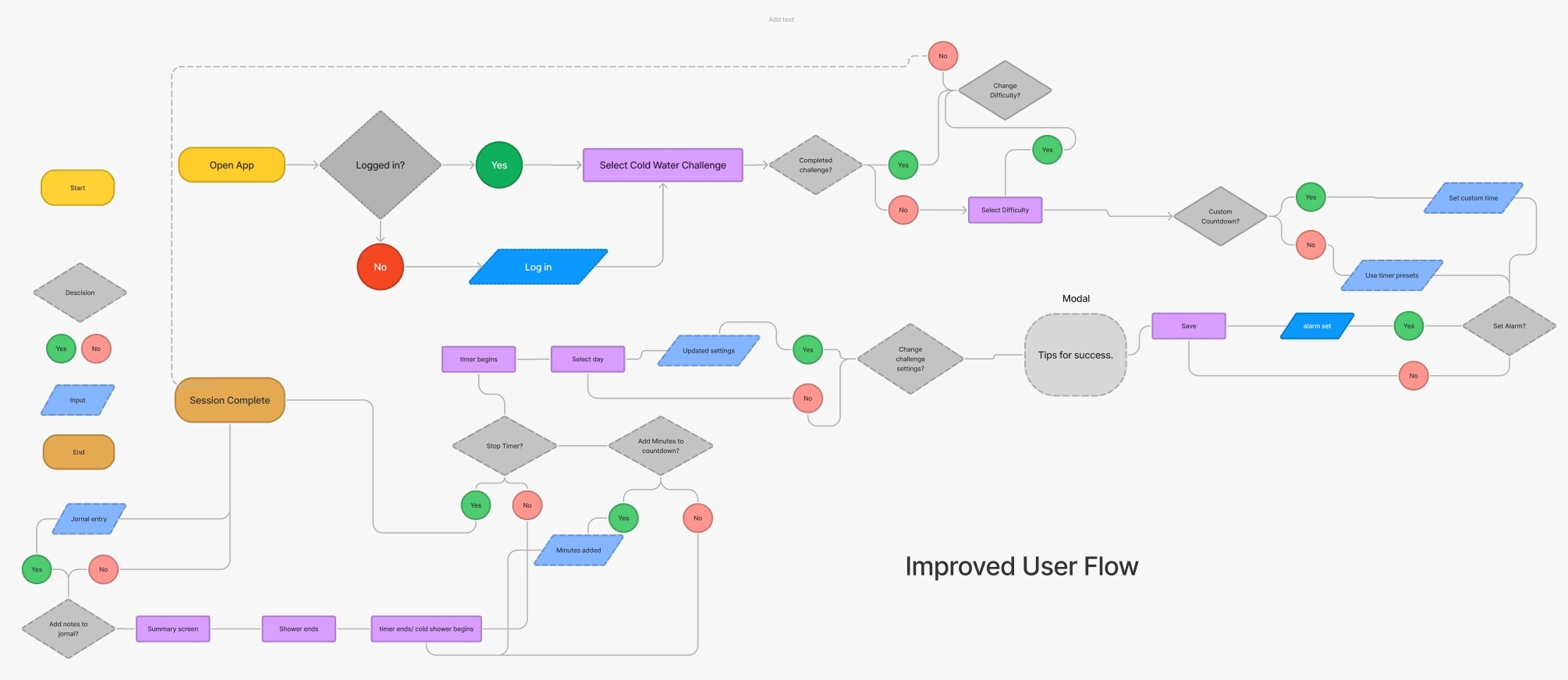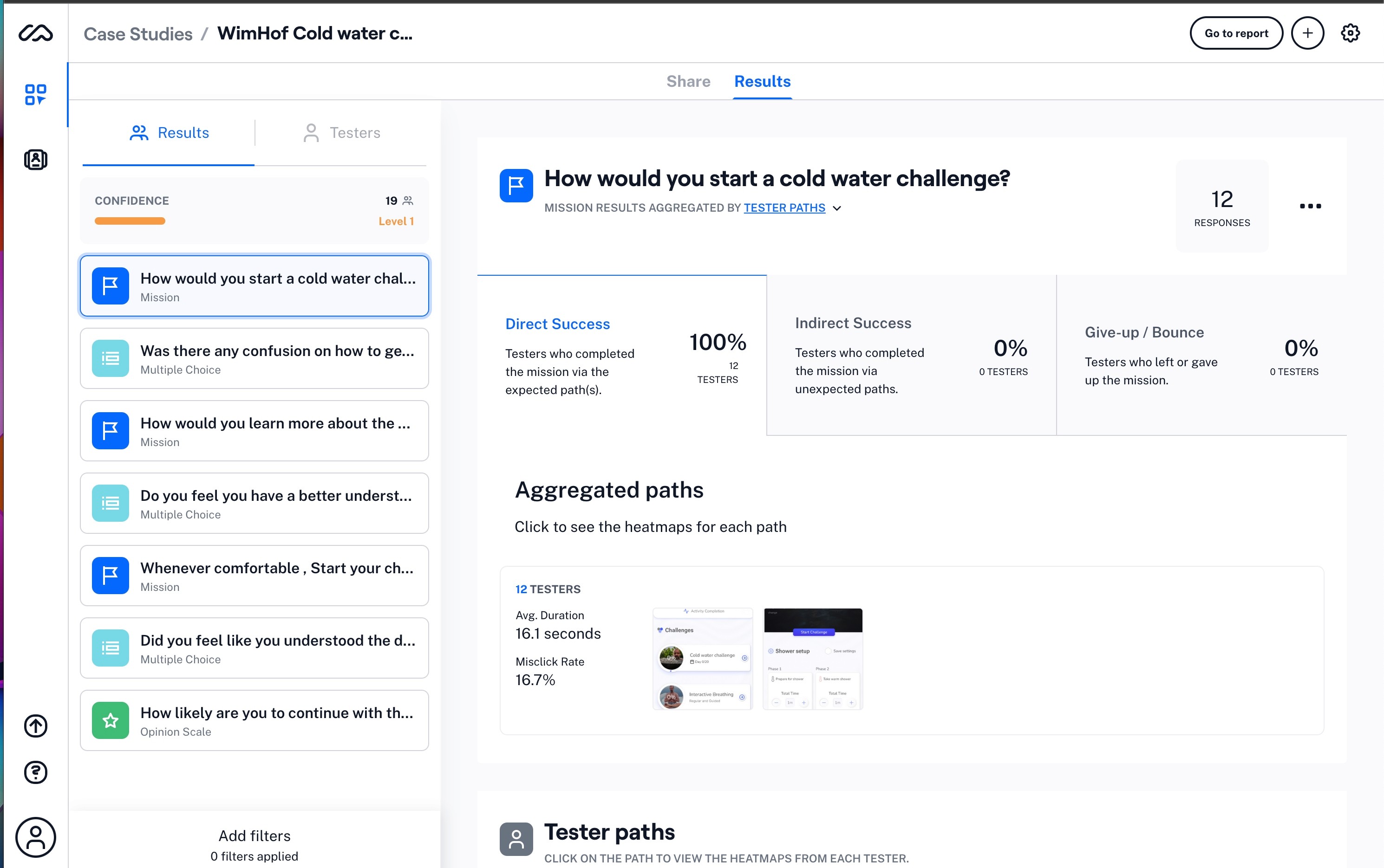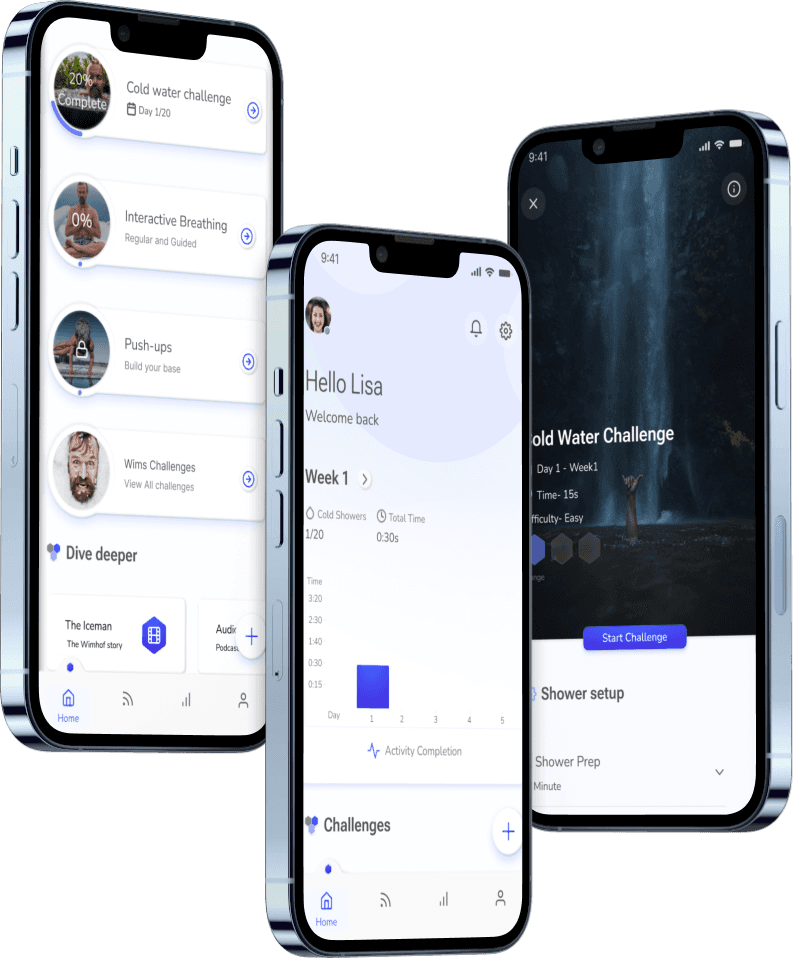
Role
User Research
Product Strategy
UI Design
Interaction Design
Usability Testing
Tools
Figjam
Notion
Maze
Figma
Timeline
5 weeks
The Problem
Taking the cold water challenge is a confusing and unrewarding experience. As a result, fewer people convert from free to paid plans.
The Solution
The application should have tracking metrics throughout to incentivize continued use. User flow should be improved for easier task completion.
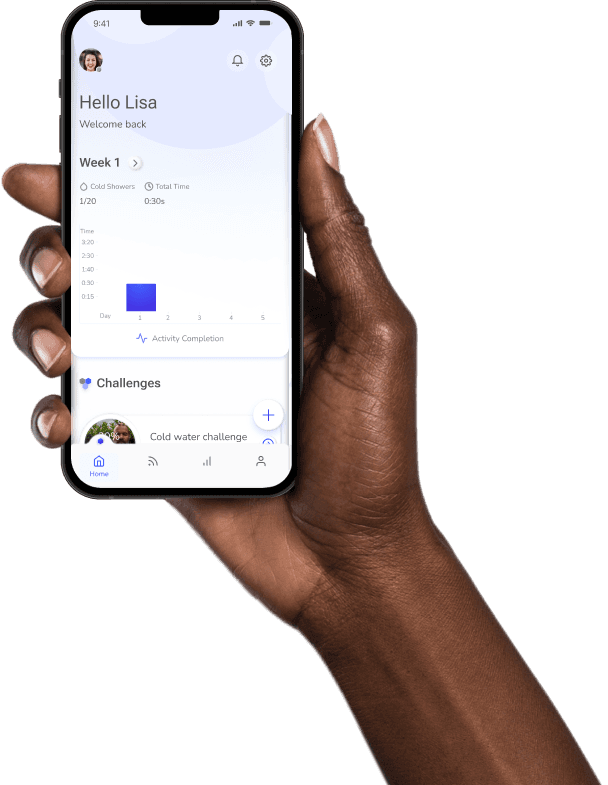
Usability Review
In order to gain a deeper understanding of the product, I conducted a usability audit to identify pain points and wow moments.
Business & User frustrations
As a business, Wim Hof would like to increase the rate of new users converting from a free to a premium paid plan during the 20-day cold shower challenge.
New users to the Wim Hof technique would like to easily set reminders, track their progress, and feel motivated to complete the cold shower challenge.
Primary Frustration
When new users are navigating through their first challenge, the process is confusing and unrewarding which results in a lack of motivation to continue using the application.
Secondary Frustration
As avid users return to the application, no visible metrics are provided regarding their current progress. Consequently, there will be no tangible insights for the user and they will be less likely to share their excitement with others.
Competitor Benchmarking
With a usability review complete, I moved on to competitor benchmarking to help me identify standards in competitor products that could be used to improve the existing experience.
Problem Space
How Might We improve the cold water challenge where the user has more control, fewer limitations, and an overall more rewarding experience resulting in greater completion rates and incentives to return?
Ideation
To avoid following the first idea I conducted a series of ideation techniques. This allowed me to consider an array of solutions.
What can we add
Tracking metrics for better insights.
What can we improve
User flow and completion process.
User Flows
Following Ideation I created user flows of the existing experience and improved the flow based on the idea that fit with business and user goals
Rapid Prototyping
Before jumping in with hi-fidelity work I spent time rapidly prototyping the experience in lo-fidelity
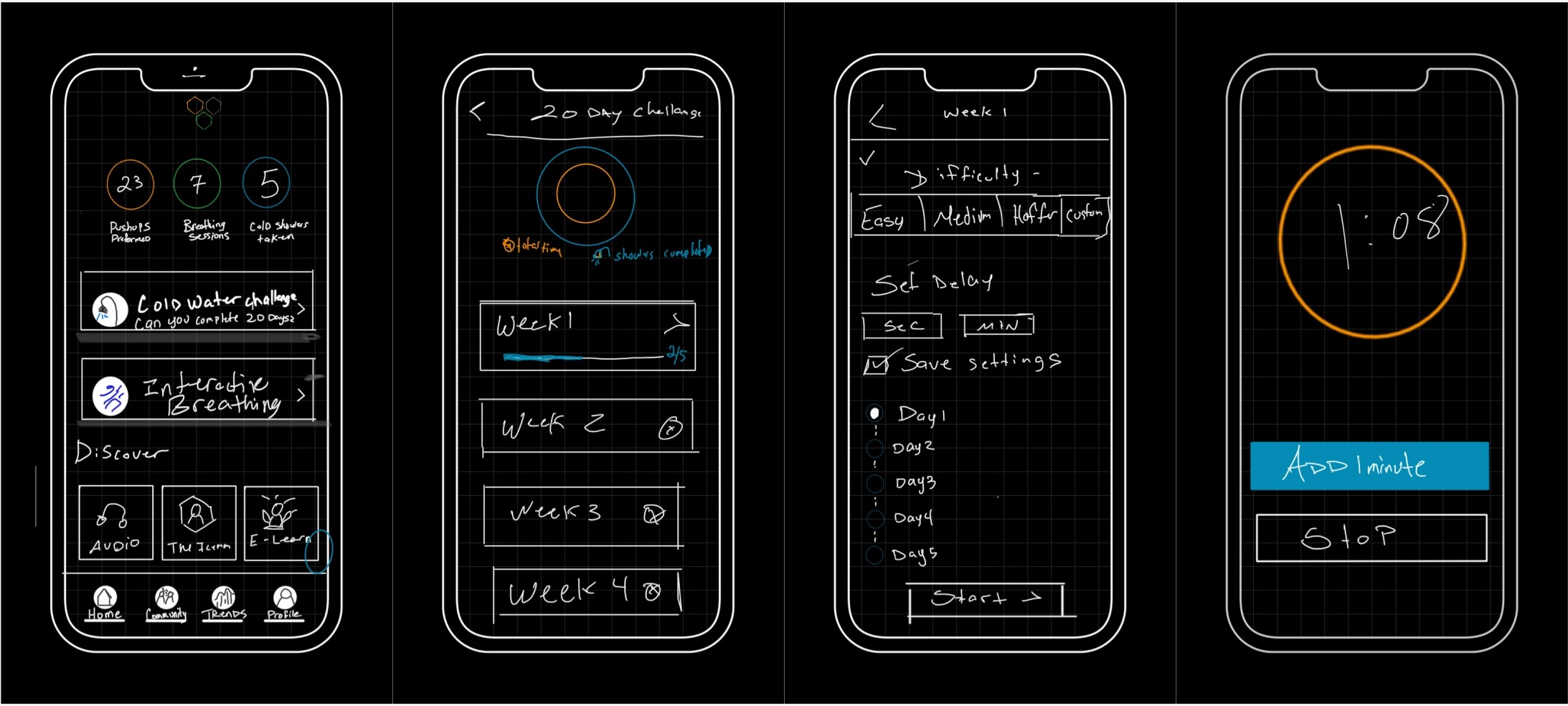
Styles & Components
Next I created a color palette and component sets to be used across the design.
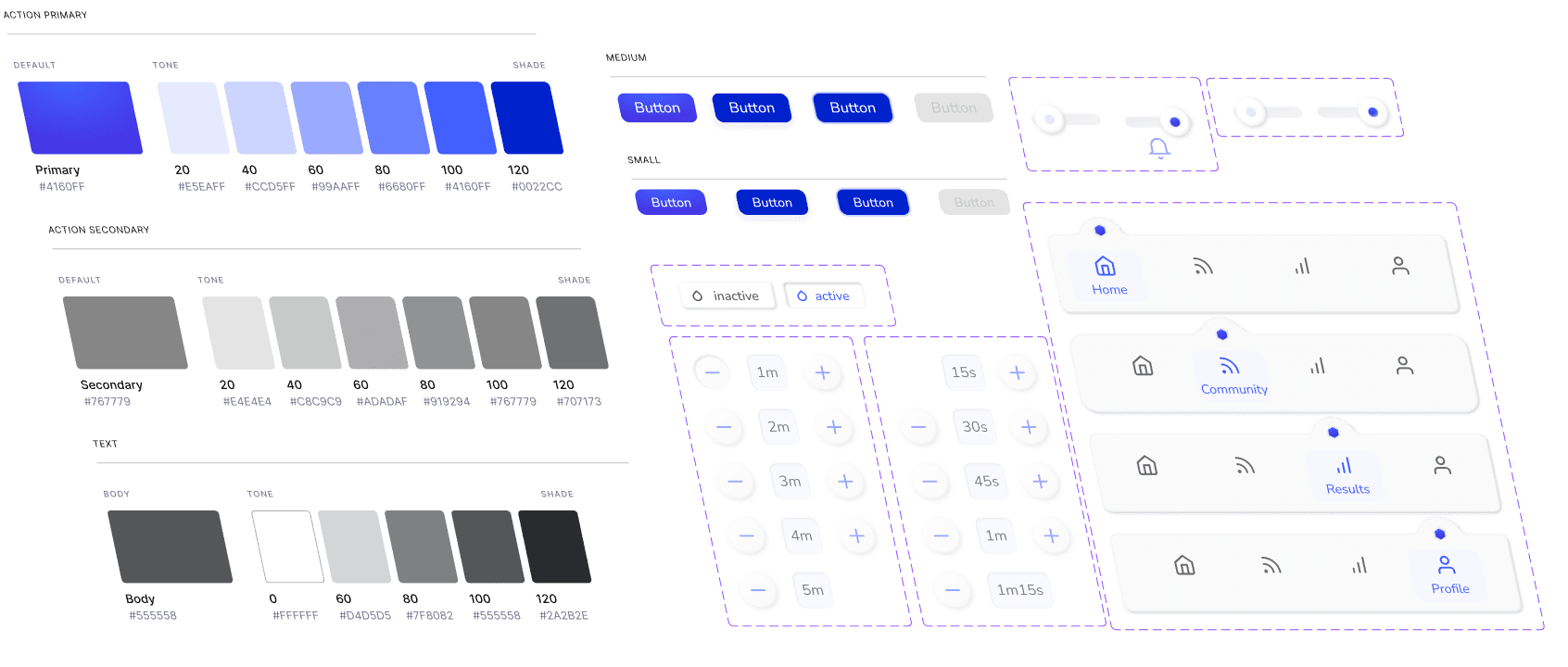
High Fidelity Prototype
Below is the final version of the prototype that I created. I included interactions and transitions from Figma to match the products flow.
Usability Testing
Next I created a usability test to gain insight into the performance of the design.
Test outcomes
Having tested the prototype, I learned that reducing the cognitive load of choices to be made from the home screen will improve the execution of the challenge. Which should improve completion rates and provide a rewarding experience.
Three key learnings
1. Providing the user with 1 clear challenge will help users in completion rates.
2. Giving users control over each phase of the challenge will improve the learnability of how the challenge is to be executed.
2. Providing progress metrics will incentivize the user to continue with the challenge the next day.
Next steps
I would like to explore more strategically placed sharing options. I would also like to explore calendar reminder options as well.

